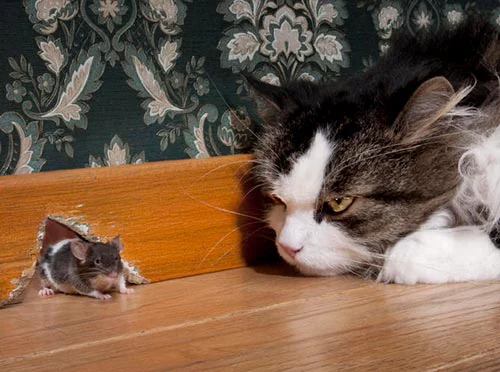How to Prevent and Control Mice Infestations in Your Home
Mice and other rodents are some of the most common house pests in America. They can fit their bodies through tiny holes and cracks you can easily miss. Once they get cozy, the infestation can get out of control in a matter of weeks and cause damage to your walls, furniture and your health. Let’s talk about simple steps you can take to DIY mice control in your home.
How to Spot a Mice Infestation?
There are several key signs to watch out for when it comes to mice infestation. Mice droppings are mostly going to be found near areas with food packages, in drawers, pantries, or cabinets. These droppings could also be found under sinks and other dark and tight spaces. Fresh droppings will be darker and moist. Older droppings will be light brown or grey and they will crumble easily when they are touched. It is a good idea to follow the dropping to determine where they are nesting or feeding. If there is no direction of where the droppings are coming from, make notes of where you are finding the droppings because they could be within the area.
Gnaw marks are another key indicator that you might have a problem. Newer gnaw marks will be lighter and as they gnaw marks age, they become darker. These gnaw marks can be found on food packages, the walls, or baseboards of the house. One way to determine the age of gnawing marks and comparing possible new gnaw marks to older gnaw marks. This will determine if there is a new infestation. The gnaw marks can also indicate if the infestation is mice or rats. Mice gnaw marks will be smaller than rats. This is due to mice having smaller teeth than rats. While investigating the gnaw marks, if the previous gnaw marks are smaller than the newer gnaw marks, then it could possibly mean you could have a rat infestation.
Pets specifically cats and dogs may become more active or interested within a certain area if there are mice present. So, if you see your furry friend pawing at a particular area that they typically do not pay attention to, then exam the area for mice. If the mice infestation is large enough, then there may be a foul stale smell within the area where the infestation is occurring.
Mice need a small bit of materials to build a nest. They will use shredded paper, fabrics, and other various materials to build their nest. If you find a nest and any of the other above signs, then it is likely that there is still an infestation present within the home.

Best Ways to Keep Mice Out of Your Home
If you want to apply preventatives to your home to limit the chances of getting a mice infestation or another infestation, then use these following natural mice repellant tips. Mice do not like the smell of these items. Please note that some of these items may not be pet-friendly, so if you do have a pet, then please keep them away from the area so that they do not get sick.
- Peppermint oil: Apply peppermint oil on a cotton ball and place it in places where mice can enter the home or have entered the home.
- Cayenne Pepper: Sprinkle cayenne pepper around the entry points. Please note that if you have pets, then you should keep your pets away from the areas.
- Onions: Cut up small chunks of onion and place the chucks near the potential points of entry.
- Bay Leaves: Crush a few leaves up and sprinkle the leaves around areas that the mice can enter.
- Cat Litter: If you have a cat, then place a cup of used cat litter near the points of entry.
- Seal all potential entry points: If the mice’s head can get through the entry point, then his body can get through too. A temporary fix for these entry points is using steel wool. The mice cannot cut through the steel wool.
DIY Traps To Get Rid of Mice
Glue Traps:
These traps should be placed against the wall near the mice nest or where mice have been seen at. These traps are not technically kill traps because if you apply cooking oil to the area where the mouse is stuck, then they should come off. However, the mouse will still have sticky matter on them, and they will need help with removing the sticky matter off them.
Wood or plastic snap traps:
These traps have to be placed in places that fingers, toes, or pets cannot come into contact with them. These types of traps would do well in pantries in the corners. These types of traps may kill the mouse.

Live Traps:
These are traps where the mouse can run inside, and it locks them inside of the trap. Once the mouse is inside of the trap, then take the trap and mouse outside and release it into the wild. Place these traps in the same areas that you would place the wood or plastic snap traps.


